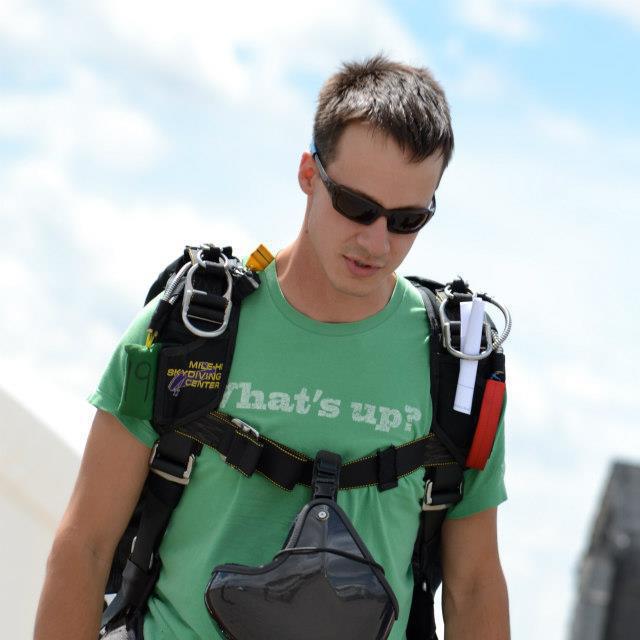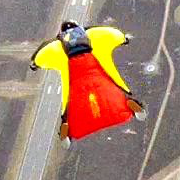Recommended Posts
Quote* reserve canopies produced to actually be used as reserves won't have packing tabs.
Maybe not all, but some of them sure do. These days packing tabs are much more useful on reserves anyway...
QuoteAlso, Precision makes a 9-cell that is a reserve, if the old brain is still working correctly.
Anybody know what George calls it?
The Falcon
903
dragon2 2
ciel bleu,
Saskia
NickDG 23
You have to balance deployment reliability with good landings while keeping in mind you could already be injured before touchdown. If someone built a modern five cell reserve hybrid from newer light weight materials I think it would sell.
BTW, the number of cells has nothing really to do with aspect ration, and I just used 5, 7, and 9 cells to make the point . . .
NickD
QuoteQuote* reserve canopies produced to actually be used as reserves won't have packing tabs.
Maybe not all, but some of them sure do. These days packing tabs are much more useful on reserves anyway...
Yep, I've got a Laser 7R in my closet that has 'em.
QuoteAlso, Precision makes a 9-cell that is a reserve, if the old brain is still working correctly.
Anybody know what George calls it?
THe PD tandem reserve is a 9 cell also.
Cheers,
Travis
I was wondering that I would chop Magic if it would be the main over me, I have no complains about Cricket, flying nice, landing nice.
crwpj 0
QuoteAll canopies are designed to open properly.
with varying degrees of success. ever jumped an 11 cell?
pulling is cool. keep it in the skin.
options: it does a body good.
FAA Senior Parachute Rigger
Tactical Delivery Instructor (Jeddah, KSA)
FFL Gunsmith
riggerrob 613
QuoteQuoteAll canopies are designed to open properly.
with varying degrees of success. ever jumped an 11
cell?
>>>>>>>>>>>>>>>>>>>>>>>>>>>>>>>>>>>>>
I have hundreds of jumps on Strong 520, 11-cell tandem mains. They were to best-landing tandem canopies before ZP fabric was invented.
Unfortunately, Strong did not put enough effort into designing the 520. They just took their old 425 main/reserve and sewed on a couple more cells. The worst part was that they retained the old 425 slider.
As a result, 520s opened as fast as reserves and only god's-gift-to-packers could make the openings tolerable.
I tore up more 520 mains than I care to remember!
skybytch 259
QuoteThe only issue is going to be finding a reserve that has an attachment point for the bridle. I believe Precision reserves do
Raven/Super Raven/Micro Raven reserves have a bridle attachment point. The Raven Dash M does not.
I haven't packed an RMax so I'm not 100% sure, but I don't think they have them either.
gemini 0
Blue skies,
Jim
darkwing 4
QuoteAlso I believe that a reserve that is jumped as a main can no longer be used as a reserve.
While there may be an isolated case (as specified by the manufacturer) where that is true, it is NOT generally true.
-- Jeff
My Skydiving History
gemini 0
Quote...it is NOT generally true.
My bad. I was reading more into the instructions than was there and thinking of the 40 repack test requirement.
"DEGRADATION FROM USE
This canopy is designed for reserve or emergency use only. It is not intended to be jumped on a regular basis, or to accrue a large number of jumps. In an effort to build the most reliable reserve parachute possible, materials were chosen mainly for reliability and strength, rather than maximum durability over a large number of jumps. The fabric permeability increases with use, causing the canopy to take more time and altitude to open. A canopy with a lot of jumps will not open as quick or land as well as a new one. It is very important that your reserve be in close to new condition. A reserve with fabric over the permeability limits may take too long to open at routine cut-away altitudes, resulting in your death. If you are in doubt about the condition of your reserve, have it thoroughly inspected and have the fabric permeability tested."
PD Series Ram-Air Reserve Parachute Owner's Manual, 3rd Edition 1995
Blue skies,
Jim
FrogNog 1
-=-=-=-=-
Pull.
QuoteOur US Military Mt1/ MC series was designed to have a reserve interchanged into a main if needed. That is that once the reserve had like five activations that reserve became a main canopy. Each system had a bridle attaching point and were the same size that way if the jumper had a problem that had to involve a cutaway then the reserve could be used and the mission could still be done. Say a 20,000 feet HAHO. etc..
Unless it was a MT1-XS rig. 370 main 270 5 cell reserve.
MT1-XS
Scroll down to "Free Fall Capability"
Sparky
I can tell you that having just one actavation on one of these big boys made me not want to have another one, unless I had to. Until the materail had time to open up some making the opening a little better. This in turn allowed for a contious resupply of both mains and reserves in the system. Where a worn out main could be replaced with a little bit opened reserve.
My personal MT1 has about 50 jumps on the main and zero activations. Not a bad deal but I see love my Vector three with the skyhook though.
Just my two cents here.......
FAA Senior Parachute Rigger
Tactical Delivery Instructor (Jeddah, KSA)
FFL Gunsmith
riggerrob 613
Raven Dash M was the first version without bridle attachments or packing tabs.
R-Max does not have them either.
R-Max also has a new airfoil, new line trim and a much improved flare. Even when you load an R-Max in the 1.8 pounds per square foot range, it still flies straight and has a decent flare. The only caveat with R-Maxes is to do a few practice flares. For example, the heavily-loaded R-Max - that I jumped last month - stalled when I pulled the toggles level with my diaphram/bottom rib.







I'm going to disagree with you on this Sparky. I believe that aspect ratio is connected to reliability. Lower aspect = more reliable.
This was certainly the view in the early days by the developers of the ram air reserve (Para-Flite), and I believe that more recent canopy manufacturers continue to hold the view that rectangular, with lower aspect ratio makes for better reliability.
-- Jeff
My Skydiving History
Share this post
Link to post
Share on other sites